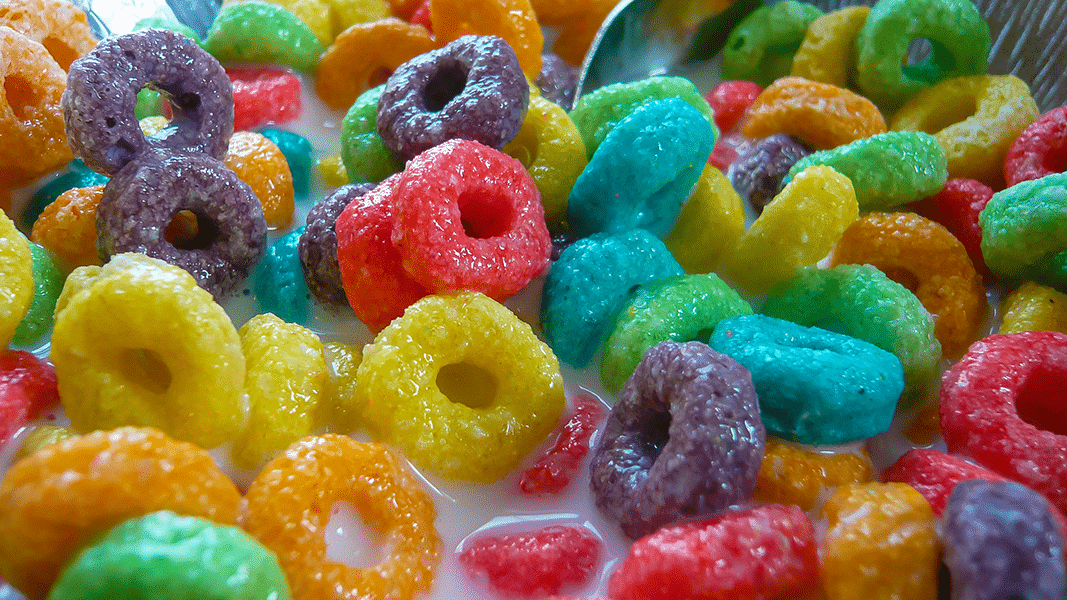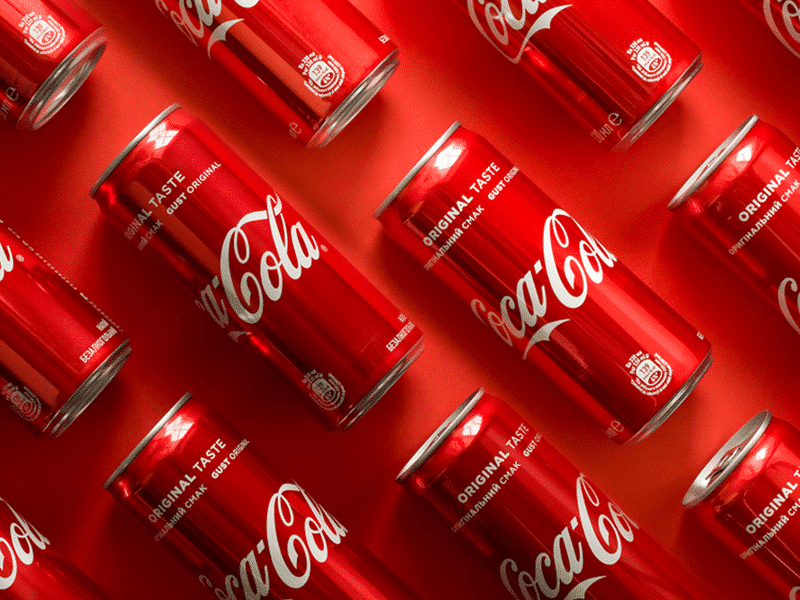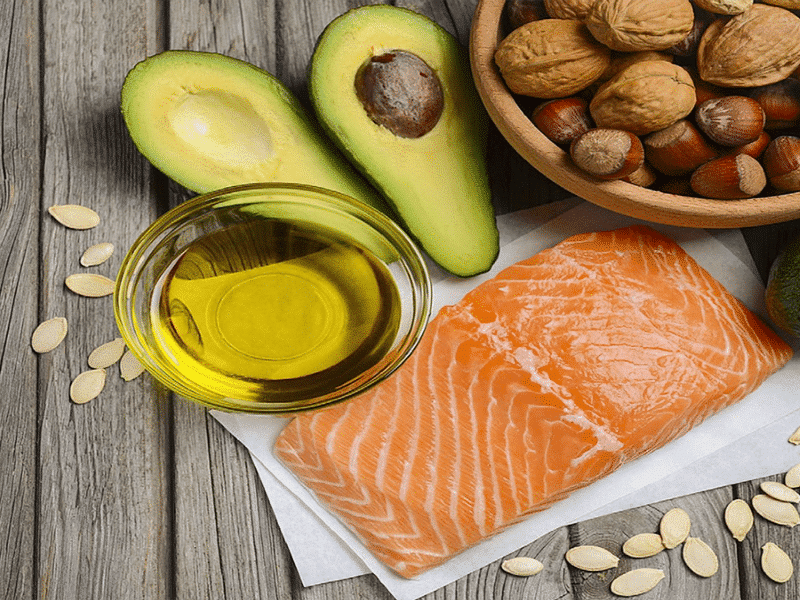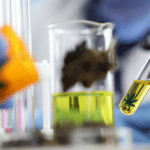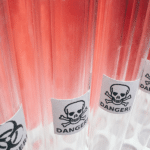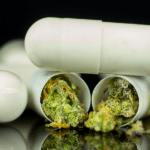The Food and Drug Administration (FDA) recently reiterated its official disapproval of any nonpharmaceutical use of cannabidiol (CBD), a non-intoxicating cannabis compound with significant therapeutic attributes. In the world according to the FDA, CBD is not a safe substance and it is not a legitimate dietary supplement — and, therefore, we shouldn’t buy, sell or consume food or beverages containing CBD. But unregulated CBD-infused ingestibles are just a mouse click away for anyone who can’t make it to their local gas station or community market.
“CBD has the potential to harm you,” the FDA declared, noting that is it “has seen only limited data about CBD safety and these data point to real risks that need to be considered before taking CBD for any reason.”
The FDA’s precautionary overreach with respect to CBD contrasts sharply with its lax policy toward chemical poisons such as arsenic, which is an FDA-approved food ingredient. And arsenic is just the tip of an immense toxic iceberg. About 3,000 out of the 10,000 chemicals on the FDA’s list of approved food additives have never been reviewed for safety by the FDA. The list includes several known carcinogens.
Many of these compounds were “grandfathered in” without fanfare because they were widely present in food prior to the passage of the 1958 Food Additives Amendment (FAA). This amendment sought to allay public concern about the increased use of chemical additives in processed food.
A Major Loophole
While the ostensible purpose of the FAA was “to prohibit the use in food of additives which have not been adequately tested to establish their safety,” the amendment included a major loophole, whereby commonly used substances that the FDA deemed “generally recognized as safe” (GRAS) prior to 1958 would be exempt from the new law.
The “GRAS system,” which the FDA still uses to determine food safety, relies on a voluntary process that enables manufacturers to assess health risks and decide whether an additive is benign or bad news. Manufacturers under the GRAS system can “establish a scientific consensus” by creating specialized expert panels for the purpose of reviewing a substance. These “experts” can include members of the company’s staff or consultants with undisclosed financial conflicts of interest.
Once an expert panel rendered its verdict, a manufacturer could simply notify the FDA about the GRAS determination — if the manufacturer felt so inclined. Notifying the FDA about a GRAS determination was completely at the manufacturer’s discretion. In other words, the responsibility for determining an ingredient’s safety was now up to the manufacturer rather than the FDA. This dubious arrangement spared FDA officials the hassle of having to conduct resource-intensive testing.
Here are some examples of harmful FDA-approved ingredients that have poisoned the U.S. food supply:
High Fructose Corn Syrup (HFCS)
In February 2012 Nature published an article, “The toxic truth about sugar,” which discussed several substantial concerns about the adverse health effects of sweetener additives, including sugar’s lack of nutritional value as well as its pernicious role as a factor “responsib[le] for metabolic diseases [and] toxic effects on the liver.” Sugar’s high abuse potential, its association with cognitive decline, and its potential link to cancer were also cited.
“If international bodies are truly concerned about public health, they must consider limiting fructose — and its main delivery vehicles, the added sugars HFCS [High fructose corn syrup] and sucrose — which pose dangers to individuals and to society as a whole,” the Nature authors stated.
High Fructose Corn Syrup (HFCS) is a sweetener made from corn starch. The FDA considers HFCS to be GRAS. But exposure to HFCS is highly controversial for several reasons. HFCS-infused products like sodas typically exhibit “higher than expected” levels of fructose. (The fructose levels in these drinks are often not disclosed.) While glucose is readily absorbed by the body via the actions of insulin, fructose generates insulin resistance. This means that HFCS can trigger increased triglyceride production, leading to a variety of illnesses associated with obesity and metabolic syndrome, such as hypertension, diabetes and cardiovascular disease, abnormal increases in body fat, and nonalcoholic fatty liver disease.
Obesity also increases the risk of developing several types of cancer. A team of scientists from Cornell University and several other research institutions found that ingesting HFCS promoted the growth of intestinal cancer cells in mice, to cite but one example.
According to Bart Hoebel, a Princeton psychology professor who specializes in the neuroscience of appetite, weight, and sugar addiction, “Some people have claimed that high-fructose corn syrup is no different than other sweeteners when it comes to weight gain and obesity, but our results make it clear that this just isn’t true, at least under the conditions of our tests.”
Another research group led by former FDA scientist Renee Dufault, found mercury present in almost half of the HFCS samples they collected in 2005. Despite the fact that Dufault alerted her superiors to the findings she got no response and no action was taken by the FDA.
The FDA also seems unperturbed by the widespread contamination of HFCS with glyphosate, a synthetic pesticide developed and aggressively marketed as Round-Up by Monsanto for genetically modified corn and other crops. The International Agency for Research on Cancer classifies glyphosate as a “probable human carcinogen.” In October 2018, the FDA released a report detailing residues of this highly toxic pesticide in many common household foods, including children’s breakfast cereals.
The FDA maintains that foods contaminated with glyphosate are safe to consume, whereas CBD is simply too dangerous for human consumption (except when given to children with refractory seizure disorders).
For further reading on high fructose corn syrup, see:
- High fructose corn syrup and diabetes prevalence: A global perspective
- High-fructose corn syrup-55 consumption alters hepatic lipid metabolism and promotes triglyceride accumulation
- Energy and Fructose from Beverages Sweetened with Sugar or High-Fructose Corn Syrup Pose a Health Risk for Some People
Nitrates & Nitrites
Commonly used as preservatives or color-enhancing agents for processed meats, cheese, and fish, nitrates and nitrites were among the first “GRAS” foods exempt from the Food Additives Amendment. But several investigations have raised serious questions about the health effects of these compounds.
In 2006, the International Agency for Research on Cancer published a report that classified nitrates and nitrites as “probable human carcinogens.” And a 2009 study published in The American Journal of Clinical Nutrition found: “The presence of nitrates and nitrites in food is associated with an increased risk of gastrointestinal cancer and, in infants, methemoglobinemia [a blood disorder].”
Furthermore, a 2015 meta-analysis of 49 nitrate/nitrite studies found “high intake of nitrites … resulted in an elevated risk of cancer.” Other studies have linked consumption of nitrate-rich cured meats to an increased risk of childhood brain tumors in the offspring of users. Nitrates and nitrites are also disguised as other ingredients, such as “celery powder,” found in products labeled “natural” or even “organic.”
“Many unanswered questions and data gaps about CBD toxicity exist,” the FDA alleges. Yet there are numerous peer-reviewed research papers that clearly delineate the toxic effects of nitrates and nitrates, which the FDA, perversely, still consider to be GRAS, while CBD is officially forbidden in food.
For further reading on the toxicity of nitrates and nitrites, see:
- Risk of colorectal and other gastro‐intestinal cancers after exposure to nitrate, nitrite and N‐nitroso compounds: a follow‐up study
- Processed meat intake, CYP2A6 activity and risk of colorectal adenoma
- Red and processed meat consumption and risk of pancreatic cancer: meta-analysis of prospective studies
Artificial Colorings
Another group of harmful additives is camouflaged by the umbrella term “artificial colorings.” You can find artificial coloring in just about every processed food product — from candy to sodas, juices, and even pickles.
A 2007 study published in The Lancet examined the effects of artificial colorings on children. The authors found that consuming artificial colorings and preservatives can increase hyperactivity in kids. These findings prompted the European Food Standards Agency to urge manufacturers to remove artificial coloring from their food products.
Published in the International Journal of Occupational and Environmental Health, a 2012 research paper by UCLA scientists reported that “all of the nine currently US-approved [food] dyes raise health concerns of varying degrees.” Specifically, they noted that:
- “Red 3 causes cancer in animals, and there is evidence that several other dyes also are carcinogenic.”
- “Three dyes (Red 40, Yellow 5, and Yellow 6) have been found to be contaminated with benzidine or other carcinogens.”
- “At least four dyes (Blue 1, Red 40, Yellow 5, and Yellow 6) cause hypersensitivity reactions.”
The UCLA researchers also asserted that these dyes “do not improve the safety or nutritional qualities of foods.” They suggested that currently used dyes should be removed from the food supply and urged regulatory authorities to “require better and independent toxicity testing, exercise greater caution regarding continued approval of these dyes, and in the future approve only well-tested, safe dyes.”
The FDA’s stance on artificial colorings, however, remains impervious to scientific evidence and contemptuous of public health.
For further reading on the side effects of artificial colorings, see:
- Synthetic Food Colors and Neurobehavioral Hazards: The View from Environmental Health Research
- Synthetic food coloring and behavior: a dose response effect in a double-blind, placebo-controlled, repeated-measures study.
- The effects of a double blind, placebo controlled, artificial food colourings and benzoate preservative challenge on hyperactivity in a general population sample of preschool children
Artificial Flavorings
“Artificial flavorings” is an umbrella term that encompasses 700 different synthetic chemicals, many of which are harmful to consume. But according to the FDA’s Code of Federal Regulations Title 21, processed food manufacturers aren’t even required to identify these ubiquitous compounds on product labels. “If the flavor consists of two or more ingredients,” the label simply may state: “All flavor ingredients contained in this product are approved for use in a regulation of the Food and Drug Administration.”
Some of these omnipresent artificial flavoring substances aren’t even listed on the FDA Food Additives list. The FDA justifies omitting this information out of deference to certain trade groups, such as the Flavor Extract Manufacturers Association (FEMA), which “has established expert panels that evaluate and make determinations on the GRAS status of flavoring substances.”
FEMA, however, is not an objective third party research group dedicated to protecting public health. It’s a trade association comprised of FDA-appointed, industry-friendly “experts.” Many of these so called experts are actually employees of the manufacturer, and as such may bear financial conflicts of interest. But there are no rules mandating that the FDA must prevent such financial conflicts. It also bears mentioning that the average FDA review for food additives takes two years — “but some drag on for decades.”
Several environmental groups successfully sued the FDA to remove seven synthetic food additives after linking these substances to cancer in animal laboratory studies. FEMA protested the decision, arguing that it “demonstrates a limited interpretation of animal studies and cancer by failing to address risk or relevance in humans.”
The FDA also insisted that these additives were safe, even though it acknowledged that “there were findings of carcinogenicity in animal studies.” In the world according to the FDA, there is insufficient data pertaining to these synthetic flavoring substances to support “a finding that they are human carcinogens when consumed at the levels of intended use.”
What exactly are the intended levels of use for artificial flavorings or additives?
How are consumers supposed to access relevant information if these substances aren’t even included on ingredient labels for common products and are nowhere to be found on the FDA’s own Food Additive list?
And why is the FDA so quick to dismiss animal data that doesn’t align with the priorities of its corporate partners, while insisting that CBD is unequivocally dangerous based on dubious extrapolations from animal data?
For further reading on the adverse effects of artificial flavorings, see:
- Toxicity of food flavorings to ex-vivo, in vitro and in vivobioassays
- Synergistic Interactions between Commonly Used Food Additives in a Developmental Neurotoxicity Test
- The Butter Flavorant, Diacetyl, Forms a Covalent Adduct with 2-Deoxyguanosine, Uncoils DNA, and Leads to Cell Death
Artificial Sweeteners
There is nothing healthy about diet sodas spiked with aspartame and other FDA-approved artificial sweeteners. An additive found in many processed food products, aspartame has specifically been linked to cancer. A 2013 study by Austrian scientists found that consumption of aspartame increased the risk of developing non-Hodgkin lymphomas (NHLs) and multiple myeloma in men.
A subsequent study in Nutritional Neuroscience classified aspartame as a “chemical stressor … which may have adverse effects on neurobehavioral health.” This report and several others have linked the ubiquitous artificial sweetener to a dizzying array of side effects, including “seizures, headaches, mood disturbances, and reduced mental performance.”
A 2012 report in the American Journal of Clinical Nutrition found an “increased risk of type 2 diabetes, cardiovascular disease, or the metabolic syndrome with higher intake of diet soft drinks.”
Ironically, weight gain is another adverse side effect of artificially sweetened beverages.
For further reading on the adverse effects of artificial sweeteners, see:
- A review of the genotoxic and carcinogenic effects of aspartame: is it safe or not?
- The Potential Toxicity of Artificial Sweeteners
- Determination of the effects of some artificial sweeteners on human peripheral lymphocytes using the comet assay
Sodium Benzoate
Sodium benzoate is widely used as a flavor enhancer, preservative, and coloring agent. Found most often in carbonated beverages like sodas, it has been linked to increased risk of hyperactivity in kids.
Researchers have found that sodium benzoate, when combined with Vitamin C, can convert to benzene, a compound associated with cancer development. The FDA’s website even states, “Benzene is a carcinogen that can cause cancer in humans.”
When the FDA tested samples of beverages that contained sodium benzoate and vitamin C in 2006 and 2007, it found that “a small number of products sampled” had benzene levels higher than federal safety standards.
But a five-year study published in the Journal of Agricultural Food Chemistry found benzene concentrations in common foods and drinks with more than 20 times the maximum contaminant level set by the Environmental Protection Agency.
Rather than banning sodium benzoate altogether as a food additive, as it seeks to do with CBD, the FDA has allowed noncompliant processed food manufacturers to reformulate their products before releasing them back on the market as “safe.”
Can anyone explain why benzene, a potential carcinogen, is allowed to remain on the FDA’s list of “safe” food substances, while CBD — a known anti-tumoral and anti-proliferative agent — is not?
For further reading on the side effects of sodium benzoate, see:
- Benzene as a Chemical Hazard in Processed Foods
- Effect of Sodium Benzoate Preservative on Micronucleus Induction, Chromosome Break, and Ala40Thr Superoxide Dismutase Gene Mutation in Lymphocytes
- Sodium Benzoate–Rich Beverage Consumption is Associated With Increased Reporting of ADHD Symptoms in College Students: A Pilot Investigation
Brominated Vegetable Oil (aka BVO)
BVO is an emulsifier and “clouding agent” commonly used in sports drinks and citrus-flavored carbonated beverages, such as Gatorade, Mountain Dew, Dr. Pepper, and Fresca (a Coca-Cola product).
Bromine, the main component of BVO, is a poisonous chemical. The Centers for Disease Control recognizes that bromine-containing compounds are “likely to cause symptoms such as nausea and vomiting (gastrointestinal symptoms).” Bromine toxicity can also cause “skin lesions, memory loss and nerve disorders.”
The use of BVO as an additive dates back to the 1930s. When Congress passed the 1958 Food Additives Amendment, BVO was placed on the generally recognized as safe (GRAS) list.
But in 1970, the Flavor and Extract Manufacturers’ Association (FEMA) reviewed BVO’s GRAS status. “At that time, they decided that there was insufficient data to support a GRAS claim,” says a report from Food Quality & Safety, a scientific journal geared towards the food industry.
The FDA responded by temporarily revoking BVO’s GRAS status in 1970 and requesting that FEMA research the compound more diligently in animals. Based on this data, the FDA made an interim ruling that deemed BVO to be safe in drinks at amounts up to 15 parts per million. However, what was meant to be an interim FDA decision has never been revisited, and BVO’s approved status as a food additive remains unchanged.
BVO products, incidentally, are banned throughout Europe and Japan.
For further reading on the side effects of BVO, see:
- Brominated Battle: Soda Chemical Has Cloudy Health History
- Brominated vegetable oil: additive linked to negative health effects
- Brominated vegetable oil in soft drinks – An underrated source of human organobromine intake
Ongoing FDA Negligence
The integrity of the FDA process for approving food additives is fundamentally flawed. The FDA’s industry-friendly GRAS system has allowed food additive manufacturers to rampantly abuse a system that is supposed to protect public health. The onus to prove the safety of a food additive should not be left in the hands of the additive manufacturer.
A 2013 report from Pew Charitable Trust found that “financial conflicts of interest were ubiquitous in determinations that an additive to food was GRAS.” Furthermore, according to this report: “The lack of independent review in GRAS determinations raises concerns about the integrity of the process and whether it ensures the safety of the food supply, particularly in instances where the manufacturer does not notify the FDA of the determination.”
The FDA has neglected to address these concerns. Federal regulators have failed to complete a review of GRAS substances that the FDA began in the 1970’s. The program was halted due to limited resources. The FDA has also neglected to re-evaluate the safety of thousands of approved compounds even when new findings detail potential negative side effects. Once a chemical additive has been approved by the FDA, manufacturers have no incentive to add additional toxicology information because the FDA does not have a reassessment program in place. Nor does it have the authority to require additional testing.
As for prohibiting CBD as a food additive, the FDA lacks credibility when it professes great concern about safety.
Janelle Lassalle is a cannabis content creator and passionate CBD advocate. You can find her work featured in a variety of publications including Forbes, Rolling Stone and Leafly. Copyright, Project CBD. May not be reprinted without permission.
Recommended Readings
CBD Does Not Go Better with Coke
Coca-Cola is eyeing CBD as a functional food additive, while the beverage giant promotes sugary drinks for overweight children.
Endocannabinoids & Endocrine Disruptors
Do chemical pollutants wreak havoc by impairing the endocannabinoid system?
Diet & the Endocannabinoid System
New research on how the ECS impacts hunger, diet, digestion, and energy metabolism.

